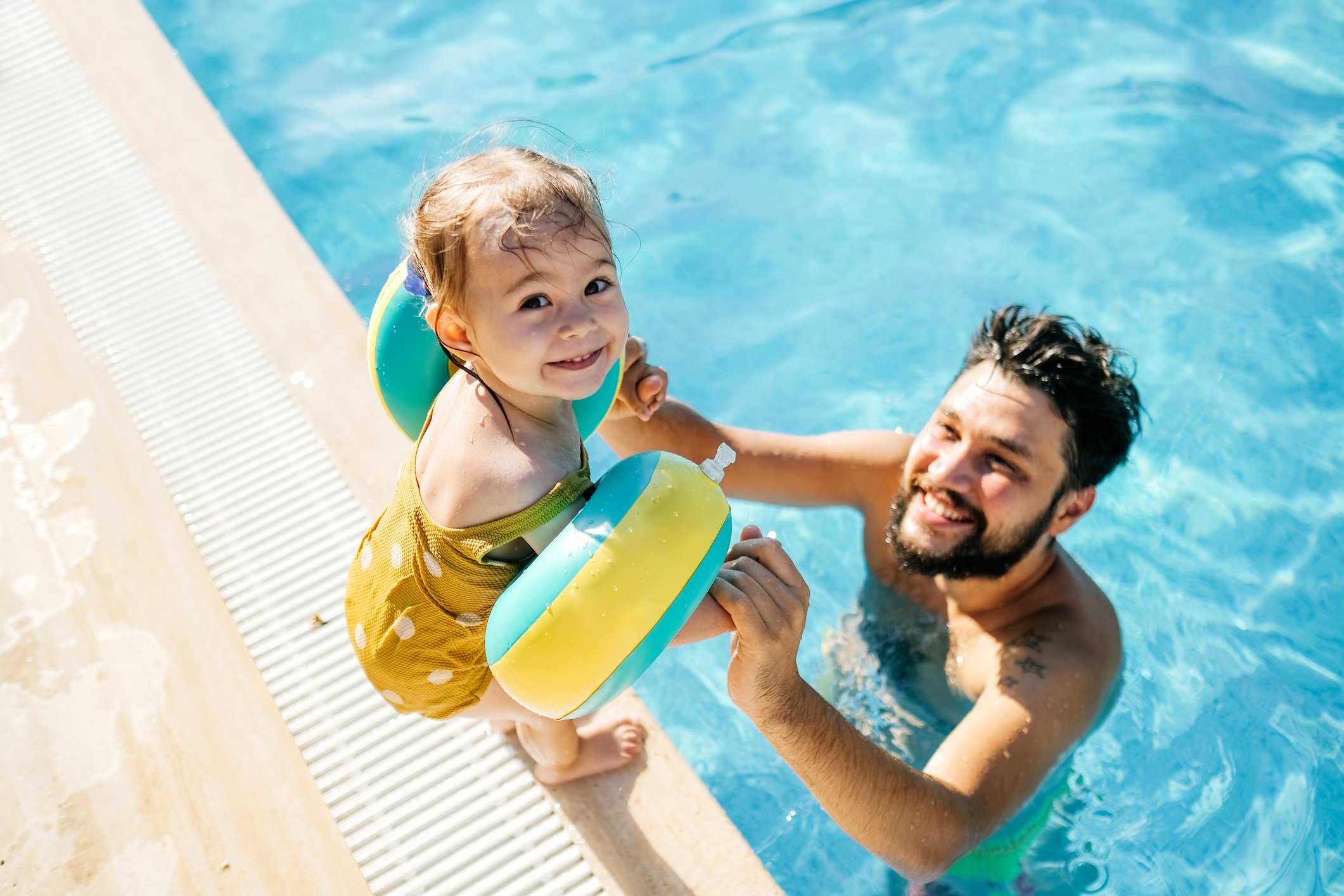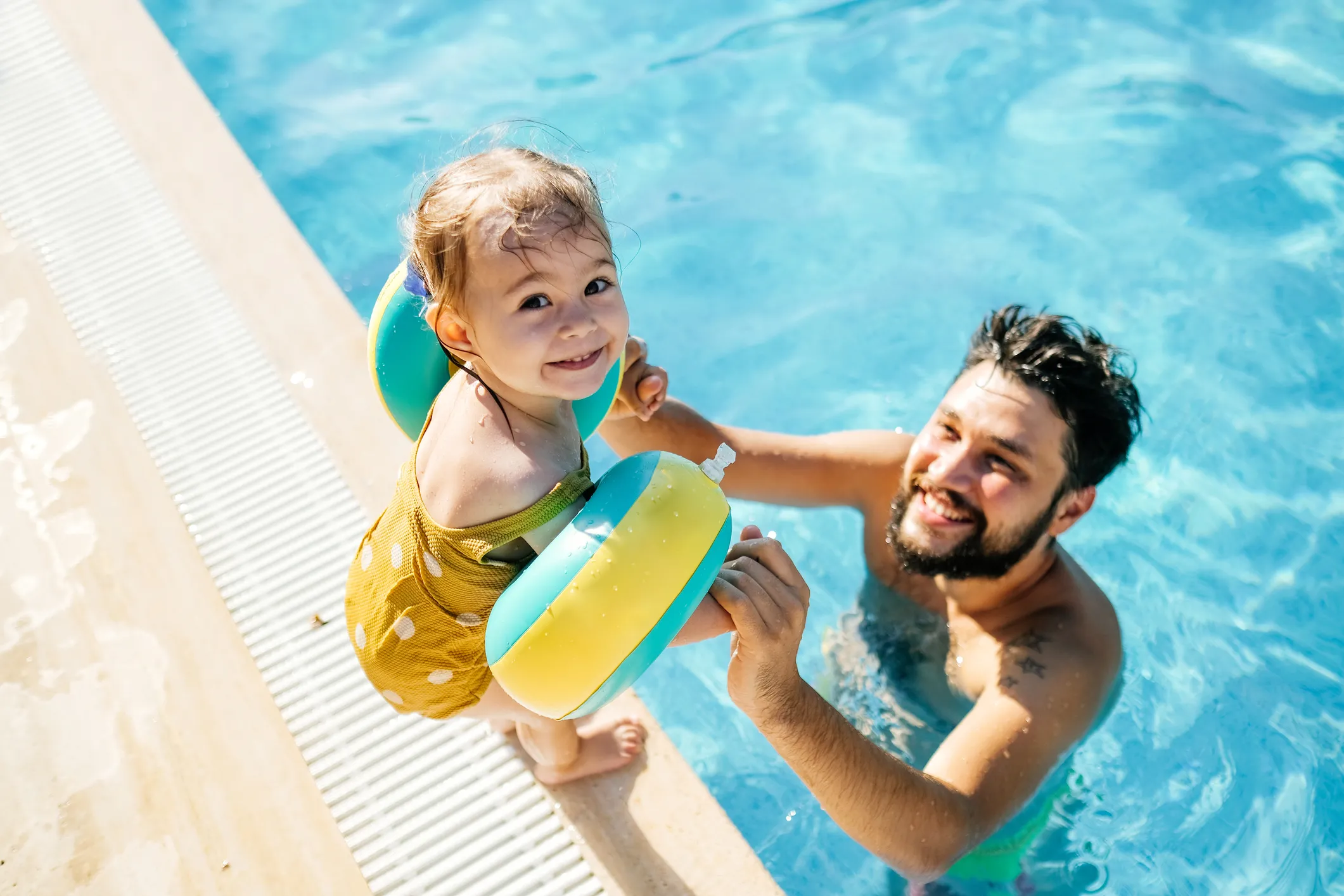Water Safety this Summer
Water safety is essential this summer.
Swimming and summer go hand-in-hand. But preparation for a dip should include more than just snacks and sunblock—water safety is also a key component.

Appoint a lookout.
At a gathering it may seem like there are lots of adults keeping a watchful eye, but parents get distracted by their phones, other kids, food preparation and more. In any waterside setting, a responsible, non-drinking adult should be assigned to keep an eye on the children. Because drowning can happen in mere seconds, he or she should avoid any distractions, such as a mobile phone or reading. Many people who drown never intend to be in the water in the first place, so be sure to keep a watchful eye whether or not swimming is on the schedule.
Drowning looks different in real life.
Movies often depict drowning victims screaming and thrashing in the water, but drowning is actually silent. According to the Red Cross, someone who is drowning may appear as if they are bobbing. They are typically in a vertical position, with no supportive kick. Their head will also be low in the water and tilted back, and their arms extended or pressing down, while their mouth is at water level. Their eyes will be glassy and unable to focus. They will not be able to respond to any questions.
Make lessons and life jackets a must.
Learning a healthy respect for the water can be a lifesaver. The CDC recommends that everyone should know the basics of swimming, such as moving through the water and floating. The earlier the better. There are swim lessons available for all ages, stages and price ranges. And, even if they already know how to swim, the CDC recommends that all children wear a life jacket in and around natural bodies of water, as they can be unpredictable. Weaker swimmers should also use a life jacket around the pool.
Add layers of protection.
If you own a pool, the CDC recommends installing a four-sided isolation fence with self-closing and self-latching entry points. The fence should isolate both the yard play space and house from the pool. Pool and door alarms are also available to alert you to unintentional pool or yard access. Ideally, all adults should also be trained in cardiopulmonary resuscitation (CPR) and first aid.
Stay alert after a swim incident.
If anyone in your party experiences a near drowning event, they should be watched carefully. Any of the following signs should prompt a visit to the Emergency Room:
- Shortness of breath or trouble breathing
- Lethargy or extreme tiredness
- Chest pain
- Excess coughing
Get a second look.
Drowning isn’t the only water safety risk. Any laceration that takes place in a natural body of water, either fresh or salt water, should be seen by a doctor. Antibiotics are often needed for cuts that take place in water.
Featured Image

Dr. Ben Fickenscher is an emergency medicine physician at Chesapeake Regional Medical Center's Emergency Department. He practices with Chesapeake Emergency Physicians, where he also serves as Managing Partner. He received his medical degree from Eastern Virginia Medical School in Norfolk, Va. and holds a degree in biology from The College of William and Mary in Williamsburg, Va. He is currently serving as President of CRMC's medical staff.
Sign up for our newsletter
We're committed to your privacy. Chesapeake Regional uses the information you provide to contact you about content. You may unsubscribe from these communications at any time.